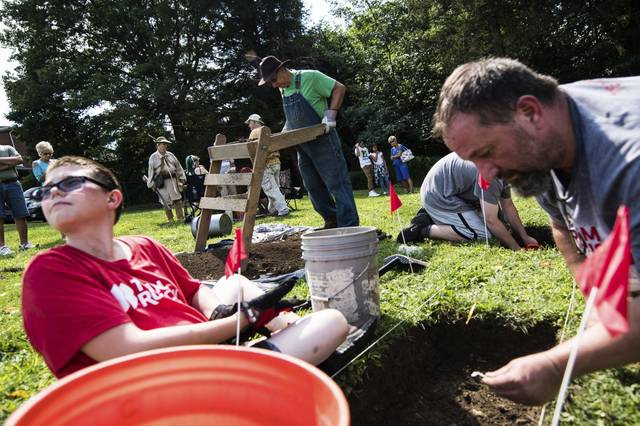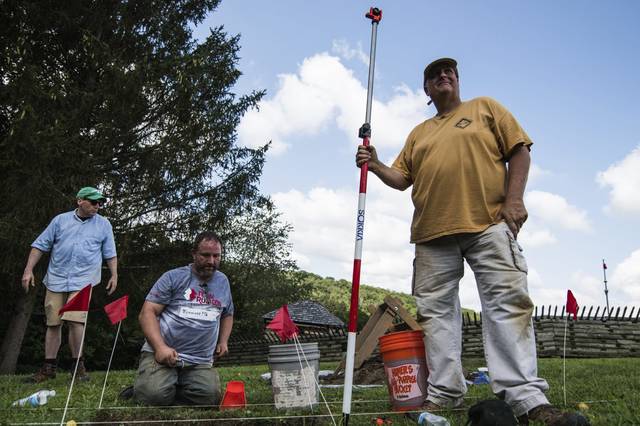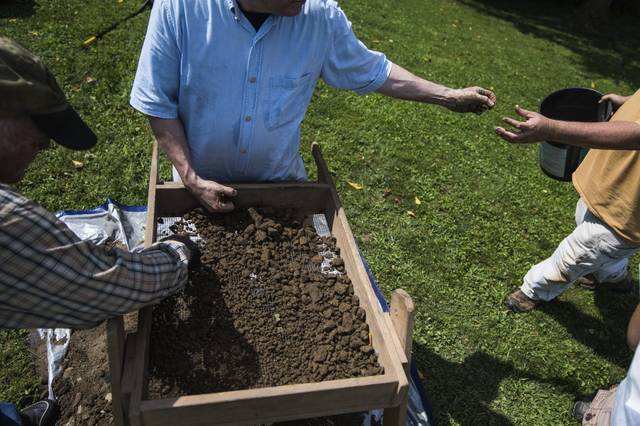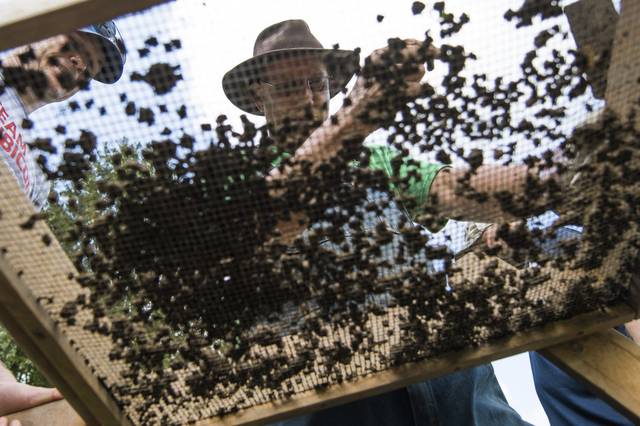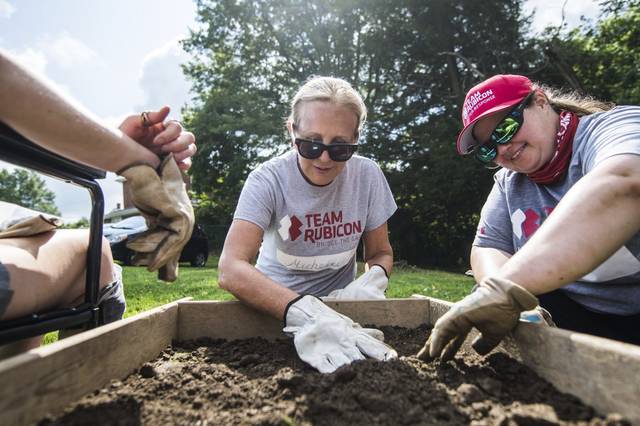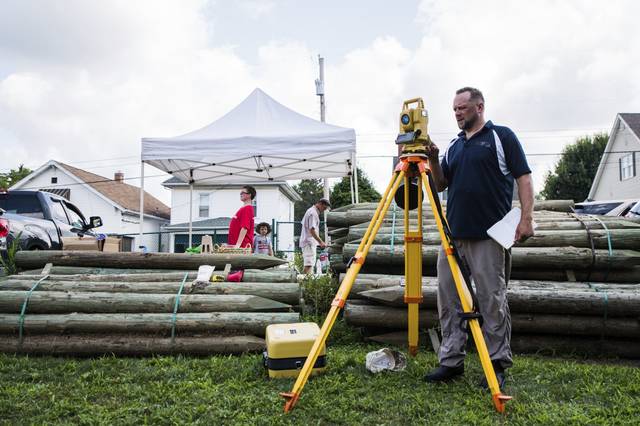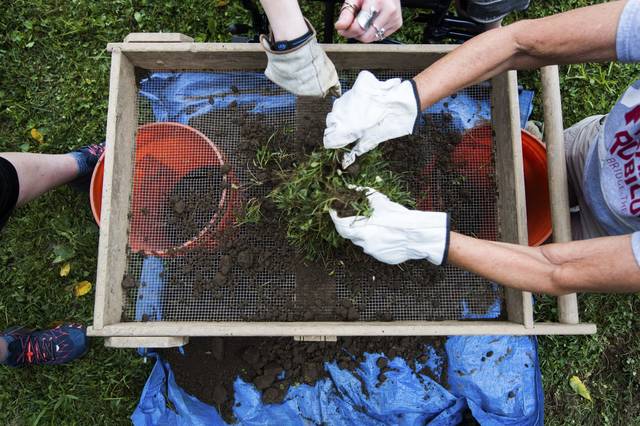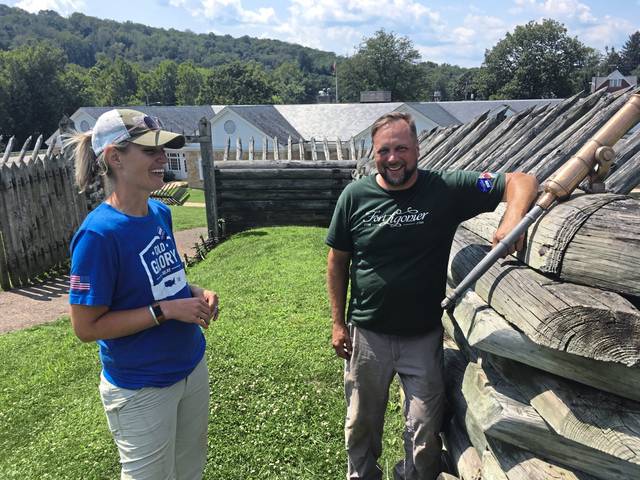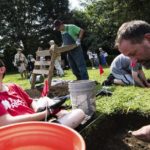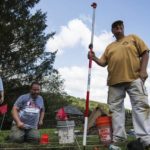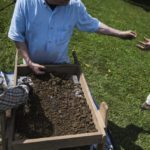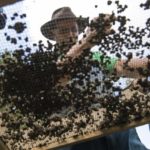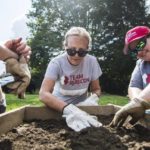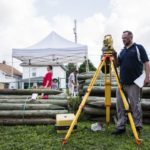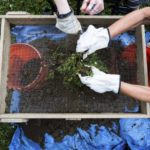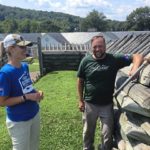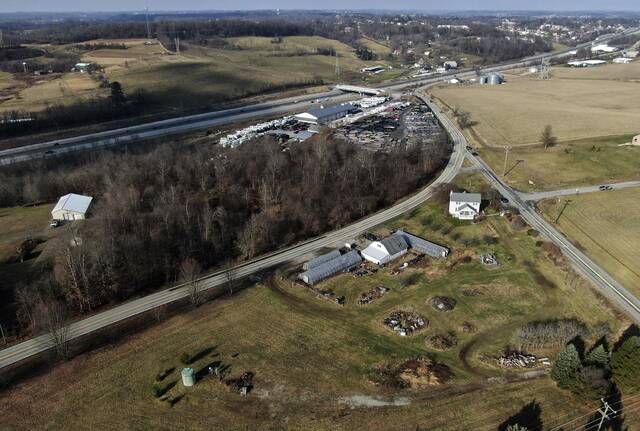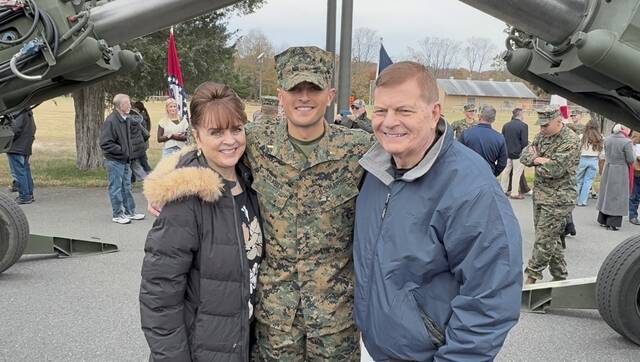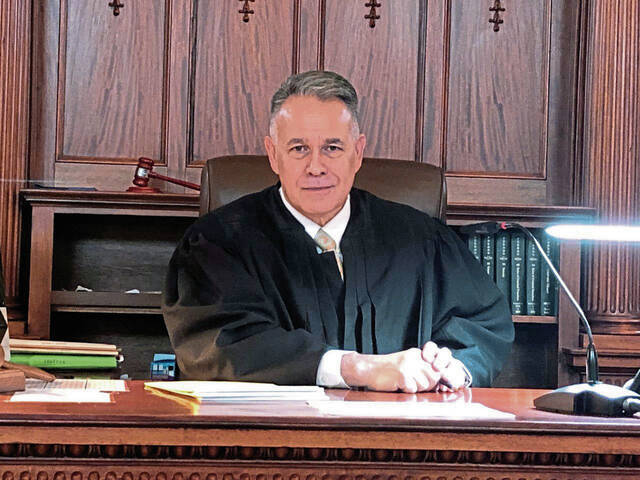A weekend archaeological dig at Fort Ligonier did not find any evidence of an artillery battery in the eastern end of the French and Indian War-era fort, but it gave veterans an opportunity to search for some history from a conflict centuries ago.
Accompanying Juniata College professor Jonathan Burns, who has conducted several annual digs at the historic fort, were about 10 people from two separate veterans organizations: Team Rubicon, which aids in disaster relief services and the Pittsburgh branch of The Mission Continues, which is involved in rebuilding communities. They conducted a controlled excavation and a metal detector survey of that area of the fort as part of the ongoing archaeological investigations at Fort Ligonier.
“The idea is to take veterans out and let them take part in the archaeology,” said Angela Jaillet-Wentling of Latrobe, a member of Team Rubicon and an Army veteran. She served in Iraq along with her husband, Richard Wentling, in 2006-2007.
When doing an archaeological dig at a military site, “a lot of times, the archaeologists don’t see the landscape the same as the veterans,” said Jaillet-Wentling, a historic preservation specialist for the Pennsylvania Department of Transportation.
Burns, who has been engaging the veterans in the archaeology at Fort Ligonier since 2017, said they are very “energetic” about helping with the project.
“For veterans, this is therapeutic to be out here,” said Burns, who is director of Juniata College’s Cultural Resources Institute.
The fort was the site of an October 1758 battle between French and Native Americans seeking to stop British and colonial forces intent on capturing the French-built Fort Duquesne in present-day Pittsburgh.
As for finding the site of the artillery battery that protected the eastern end of the fort. Burns said they may need more than a weekend to do it. Rather, they may need to conduct a field school project that stretches for 10 days to allow for a more in-depth search for the remnants of the outlying artillery battery and line of communication, Burns said.


